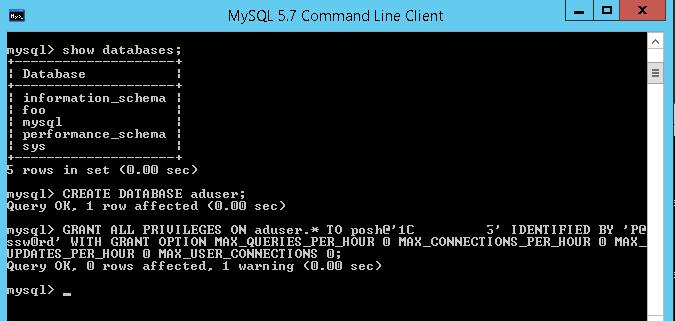
Future versions of the MySQL installer will undoubtedly fix this for OS X but in the meantime if you get the installation error, either customize the installer and avoid the startup item, or ignore the error and start and stop mysql yourself when it’s needed.

You can download the latest version of MySQL for Mac OS X here. Of course, these can be combined with starting and stopping Apache server if your intention is to setup a local web development environment. Sudo /usr/local/mysql/support-files/rver restart Sudo /usr/local/mysql/support-files/rver stop Restart MySQL Sudo /usr/local/mysql/support-files/rver start Stop MySQL Be sure to enter the command onto a single line, sudo obviously requires an administrator password to be entered. Hre are the three basic commands to start, stop, and restart MySQL in Mac OS X, including OS X El Capitan and OS X Yosemite.

It's also easier for novice users to get started with SQL and relational databases.īy using DBngin, more and more people and be able to quickly start working with their local database server.Starting, Stopping, Restarting MySQL on Mac OS X It's easier for experienced programmers to develop and test the DB setup before sending to the production. Our intention was also to lower the barrier for learning and using relational databases. It's the same experience, one click to turn on the server and another click to quit. More than just MySQLĬurrently, other than MySQL, DBngin also supports PostgreSQL and Redis. No dependencies.įrom the server control panel, you can be able to manage all the servers, turn on/off, start a new server or re-config an existing server.įor your convenience, DBngin also allows you to open the command line tools in your Terminal. You can create as many servers as you want.

Using DBngin to setup and manage MySQL Server It can automatically start with your Mac and allows us to skip a lot of complicated commands required to set up a MySQL server. It runs like any other apps you would download and install.

The easiest way to get started with MySQLĭBngin allows you to install and manage multiple MySQL servers of multiple versions on Mac within a click. Now it's available for Mac which you can download for free from here. So we decided to build DBngin, an all-in-one database version management tool. I could have used Docker but it's sort of overkill. The easiest way was to use Homebrew service but it nearly impossible to run multiple servers and manage them. The last time I wanted to install MySQL 8.0 and MySQL 5.7 all at the same time on my Mac and I couldn't really be able to find a way to do that.


 0 kommentar(er)
0 kommentar(er)
